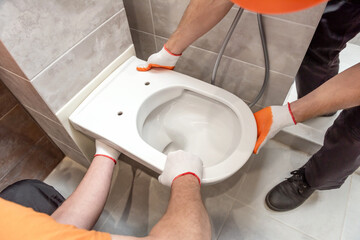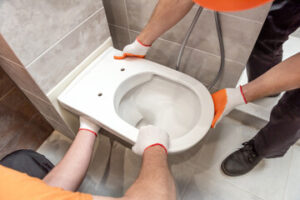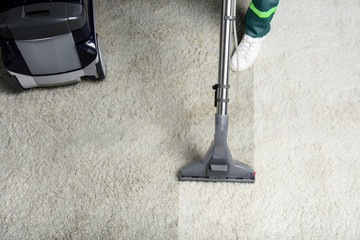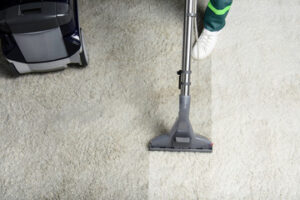Plumbing is the practice of installing and maintaining piping systems that supply water, remove waste, and heat or cool a facility. Plumbers at On Point Plumbing & Heating work on construction sites and follow blueprints and building codes to lay out piping systems.
Many vocational schools and community colleges offer certificate programs or associate degrees in plumbing. You can also find apprenticeship programs that last up to five years and provide hands-on experience.
Pipes are the backbone of your plumbing system, transporting water and waste from fixtures to the sewer or septic tank. They come in a variety of materials, and each type has different advantages and disadvantages. For example, copper pipes are durable and last for decades, but they can be expensive. On the other hand, galvanized steel pipes were once popular, but they rust and are prone to corrosion. Today, most homeowners choose polyvinyl chloride (PVC) or acrylonitrile butadiene styrene (ABS) pipe.
Both PVC and ABS are inexpensive, easy to install, and resistant to cold temperatures. They can also handle high water pressure, which makes them a good choice for main water supply lines. They do, however, have a tendency to crack and disintegrate under direct sunlight, so they’re usually only used inside the house.
Another option for piping is PEX, which is similar to PVC but has better performance in terms of temperature and chemical resistance. It is often the best option for hot water systems because it can withstand high temperatures and doesn’t release toxic chemicals into the water like some other types of plumbing pipes. PEX is also very flexible and can snake through tight spaces without becoming kinked, making it a good choice for bathrooms and kitchens.
When it comes to sanitary drain waste pipes, cast iron is an old-school solution that’s heavy and deadens the sound of wastewater running through it. It’s still sometimes used in new construction, but it’s less common than plastic PVC or ABS pipe.
In addition to pipes, the plumbing industry uses a variety of fittings and accessories for connecting and configuring piping runs. For instance, a plumber may use couplings to connect two pipes of the same size in a straight line or tees and crosses to make connections at 90-degree angles. Other types of fittings include nipples, which are threaded on both ends and allow for close connections. Some pipes also have a smooth inner lining that protects them from sediment buildup and makes them more resistant to blockages.
Fixtures
There are various types of plumbing fixtures. Some are more common than others, but all play an important role in ensuring that water is supplied, waste is removed, and the building stays clean and sanitary. Fixtures include things like toilets, sinks, bathtubs, showers, and faucets. They can also include devices that are used for draining sewage, such as backflow preventers and sump pumps.
Plumbing fixtures are designed to withstand long-term exposure to water on a daily basis, so they tend to be made from materials that are resistant to corrosion, erosion, and staining. This typically includes materials like porcelain, copper, glass, and steel. Some of these devices may also have features that help with ease of maintenance, such as removable aerators or accessible parts. Depending on the type of plumbing fixture, they may also need to be installed with clearances from finished walls and other fixtures in mind.
The term “fixtures” refers to any exchangeable device that can be connected to a plumbing system to deliver or drain water. This includes items like bathtubs, basins, toilets, kitchen sinks, laundry tubs, and flush cisterns. It can also refer to faucets and other appliances, such as washers, dryers, ice makers, and humidifiers.
There are a variety of different plumbing fixtures available, and each has its own specific function and use. Some of these are more common than others, such as kitchen faucets or toilets. Others are more obscure, such as the bidet, which is currently making a resurgence in higher-end homes and was once very popular in Europe.
It is important to choose the right plumbing fixtures for your home or commercial building. This will depend on factors such as your budget, installation requirements, and pipe sizes. Choosing fixtures that are durable and easy to maintain will ensure that they last longer and perform well. Additionally, it is important to consider any aesthetic preferences you might have. You can find a wide selection of plumbing fixtures at online retailers or in home improvement stores in your area. It is also possible to hire a professional contractor or designer to help you choose the right plumbing fixtures for your space.
Septic System
A septic system is used for wastewater treatment when sewer services are not available or too expensive. It uses natural and mechanical processes to remove organic waste from household wastewater before returning it to the ground. Septic systems can be used in conjunction with city sewer systems or as an alternative to them. It is important to use a septic system correctly and only put in what it was designed for. This will help it last longer and prevent problems. Some items that should not be poured into a septic system include coffee grounds, sanitary napkins, tampons, condoms, paint, caustic liquids, fuels, and cooking oils.
A common septic tank is made of concrete or heavyweight plastic and has two chambers separated by a partial wall. Waste flows from all plumbing fixtures into the larger first chamber, where it undergoes a settling process. The weighty solid waste sinks to the bottom of the tank to form a layer of sludge. Lighter masses, such as oils and grease, float to the top of the water’s surface, creating a layer of scum. Bacteria in the tank break down these materials, turning them into water and carbon dioxide. The water then flows over the partial wall into the smaller second chamber.
The septic tank has an outlet pipe that draws out the pre-processed wastewater and distributes it evenly throughout the drain field. It is important to install this outlet with a filter to reduce the risk of sludge or scum leaving the tank and clogging downstream components.
Ideally, the septic tank and drain field are located in a place where they will not interfere with any structures such as buildings, driveways, roads, or waterways. It should also be located away from trees and deep-rooted plants that may grow into the pipes.
A septic system that fails or is overtaxed can cause sewage to back up into the house, yard, or drainfield area. It can also contaminate nearby drinking water wells or natural waterways with pathogenic bacteria and other contaminants that can make people and animals sick. Excess nutrients in the septic tank or in the resulting sludge can also promote the growth of algae in waterways, depriving fish and other aquatic life of oxygen.
Distribution Box
Often called the “D-box,” this is a container (usually concrete) that receives septic tank effluent and then re-distributes it throughout a network of attached drain-field or soakaway bed absorption trenches and pipes. It’s one of the most important parts of a septic system, as it evenly distributes liquids to all of the leach fields. It’s also one of the most common components that need repairs or replacement as a result of improper maintenance, heavy machinery on top of it, or just age and general use.
A concrete d-box can typically last up to 20 years, but things like sludge buildup, tree roots growing into it, heavy machinery on top of it, or unrepairable damage can force you to replace it sooner. It is best to have the d-box inspected occasionally as part of your septic tank maintenance routine and have any issues fixed immediately to prevent bigger problems down the road.
Some signs of a faulty or failing distribution box include strong odors around the septic tank, water backing up in your home’s sewer line, or sewage backup in your leach field. Your septic professional can determine the problem and help you fix it, but you can do some things on your own too, such as only flushing toilet paper and being careful with household waste disposal.
If your septic tank is under warranty and you have a good home warranty company, they will likely cover the cost of the d-box replacement as a covered service. Otherwise, it’s usually a simple job for a reputable septic tank company.
Before working on a D-box, make sure that it’s switched off. It’s also a good idea to label it with the septic tank number in case any work needs to be done in the future. Also, check to see that the sensor power wires are disconnected and trimmed before mounting them in the box. This will save you a lot of time when it comes to installing and servicing sensors in the future. Once the wires are trimmed, you can connect them to each sensor’s terminal and secure them with the screws provided.





 Aside from being an excellent investment, professional carpet cleaning will also improve the air quality in your home. Carpets can trap allergens and other substances that can harm your health. These allergens can include dust, pet dander, mold, and mildew. These contaminants can cause allergic reactions and other respiratory problems.
Aside from being an excellent investment, professional carpet cleaning will also improve the air quality in your home. Carpets can trap allergens and other substances that can harm your health. These allergens can include dust, pet dander, mold, and mildew. These contaminants can cause allergic reactions and other respiratory problems. 
